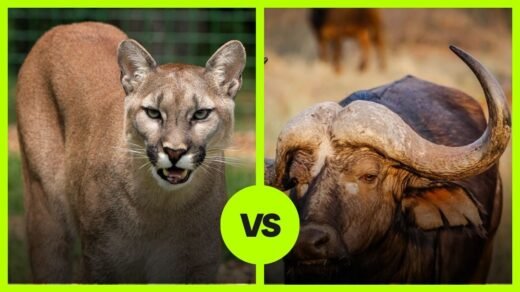Location and Habitat
Chimpanzees are primarily found in the lush rainforests and savannahs of West and Central Africa. These intelligent primates thrive in complex societies within large home ranges that can span several square kilometers, where they forage for fruit, nuts, seeds, and occasionally hunt smaller animals.
Mandrills, on the other hand, are native to the dense rainforests and occasionally wooded savannas of Central Africa, particularly in countries like Gabon, Cameroon, and Congo. Known for their strikingly colorful faces and buttocks, mandrills are the world’s largest monkeys and live in large, hierarchical groups, primarily feeding on fruits, roots, and small vertebrates.
Chimpanzee vs. Mandrill Comparison
| Feature | Chimpanzee | Mandrill |
|---|---|---|
| Size | Height: 4 to 5.5 ft Weight: 88 to 130 lbs |
Height: 2 to 3 ft Weight: 15 to 37 lbs (females) Weight: 19 to 82 lbs (males) |
| Ability to Finish Opponent | Strong social behavior, uses teamwork | Strong canines, aggressive displays |
| Weaponry | Teeth, hands for grappling | Large canine teeth, powerful jaws |
“`
Hunting and Skills
Chimpanzees are highly intelligent primates that primarily consume fruits, nuts, seeds, and occasionally hunt smaller animals like monkeys or small antelopes. They are known for their use of tools, such as sticks to fish for termites or rocks to crack nuts. Chimpanzees also engage in coordinated hunting strategies where they work as a team to corner and capture prey, particularly when hunting monkeys like colobus monkeys. Their social structure is complex, and they can be aggressive in defending their territory against other chimpanzee groups.
Mandrills, on the other hand, are one of the largest and most colorful species of monkeys. They primarily feed on fruits, roots, and small animals, including insects and occasionally small vertebrates. Mandrills are not as reliant on hunting as chimpanzees but will eat small animals when available. They have large canine teeth that can be used effectively in defense against predators. Mandrills live in large groups, which helps protect individual members from threats through safety in numbers. Their bright coloration, particularly in males, also plays a role in social signaling and dominance displays rather than in hunting or defense.
Chimpanzee vs. Mandrill Who Would Win?
The chimpanzee and mandrill face off. The chimpanzee uses its agility and intelligence, attempting to outmaneuver the mandrill. The mandrill, being larger and more robust, uses its strength and impressive canine teeth to intimidate and attack. The fight is intense, with both animals using their physical abilities to gain the upper hand. Ultimately, the mandrill’s superior size and aggression give it an advantage.
Winner: Mandrill with a 65% chance of winning.




